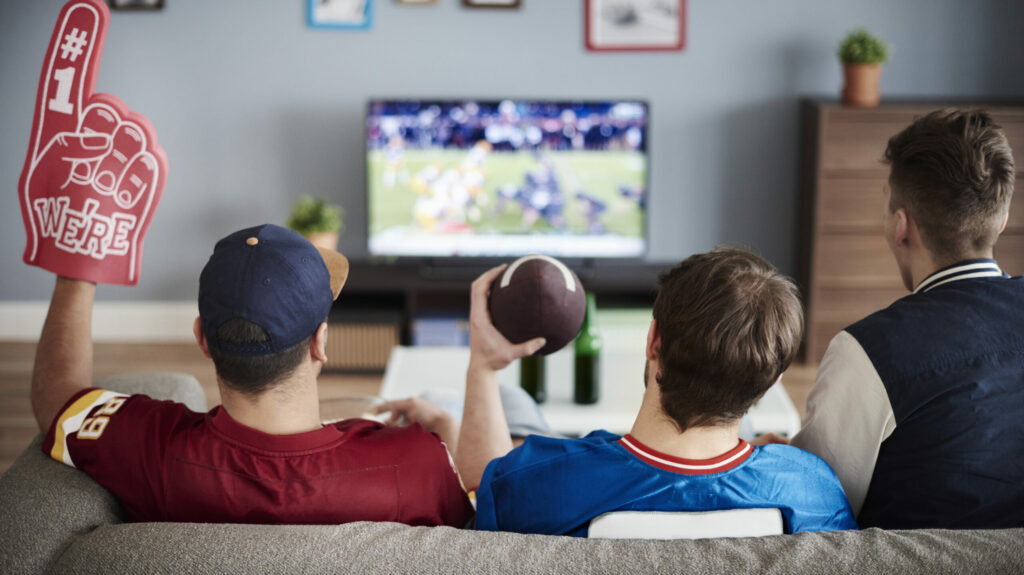Super Bowl season is officially upon us. And even if you are not a die-hard football fan, let’s be honest — we all love the comfort foods, halftime show content, and Super Bowl ads that come with the game.
Every year, a lineup of brands work tirelessly behind the scenes to earn a top spot in the Super Bowl ad rankings. But what truly separates a good advertisement from an exceptional one? As a marketing agency, we took a closer look at the brand strategies behind each advertisement.
1.) Make Them Laugh
Not only do funny ads capture attention, but they are also the ones viewers are likely to remember and might even choose to share or rewatch. While humor that is well-received requires careful planning and strategic scripting, drawing some laughs can be very worth it.
One example of humor-based marketing was Michelob ULTRA’s 2020 Super Bowl ad featuring Jimmy Fallon training alongside John Cena and a collective of other top-tier athletes. The ad established jokes every time the late-night talk show host struggled through a workout and the moment he found his own “super strength” via the beer. To bring it all full-circle, the lighthearted nature of the ad resonated back to the feel-good sensation of drinking beer, in this case, Michelob ULTRA.
2.) Add Emotional Appeal
Whether it’s a tear-jerker or something relatable, the main goal here is to get the audience in their feels. A few key factors that play into this are characters, setting, audio, and storyline.
Budweiser’s Puppy Love commercial did this exceptionally well. Whether you’re a beer drinker or not, the combination of cute animals, nostalgic music, and true companionship tugged at the heartstrings. So much so, that Budweiser brought back the iconic duo for a commercial called “Reunited With Buds” which aired in the summer of 2020.
3.) Engage Their Senses
Ever heard of autonomous sensory meridian response? Better known as ASMR, this trend is known for relaxing sensations experienced through visuals, scents, tactile scenarios, and, most commonly, audio. ASMR can vary based on the individual and the stimuli, for example, tapping, whispering, or crunching. But when done correctly, it can prove powerful.
To create a full-sensory experience, ULTRA Pure Gold teamed up with Zoe Kravitz and incorporated the popular trend in their 2019 Super Bowl ad. With captivating, scenic visuals complemented by an array of soothing sounds, ULTRA Pure Gold showed that nothing sells quite like the senses.
4.) Know Your Target Audience
To learn more about their existing consumer-base and untapped market potential, brands will conduct thorough research before the ad brainstorming begins. Things like customer feedback, purchasing trends, demographics, and market demand can all help to better identify what consumers are looking for and what they might respond positively to. At the end of the day, it’s all about understanding the mindset of the consumer enough to start thinking like them.

5.)The Element of Surprise
Since 2000, it’s been found that the average attention span dropped from 12 seconds to eight seconds. This means that brands creating Super Bowl ads need to focus on capturing their audience’s attention and maintaining it. Enter the unexpected ad concept.
In 2010, Snickers made the beloved Betty White the star of its segment. But just in case her charismatic personality wasn’t enough to keep viewers tuned-in, White was also tackled to the ground and covered in mud during a pick-up football game. In doing this, Snickers ignited a sense of curiosity among its audience — i.e. “wait, what does any of this have to do with a candy bar?” By keeping the audience guessing until the end, Snickers displayed how brands can make a strong, lasting impression.
Regardless of the approach brands take, they all share one thing in common: memorability. By channeling creativity in out-of-the-box, straightforward, and unique ways, these brands are able to produce concepts that stick with viewers. And that is what the art of effective Super Bowl ads is all about.



